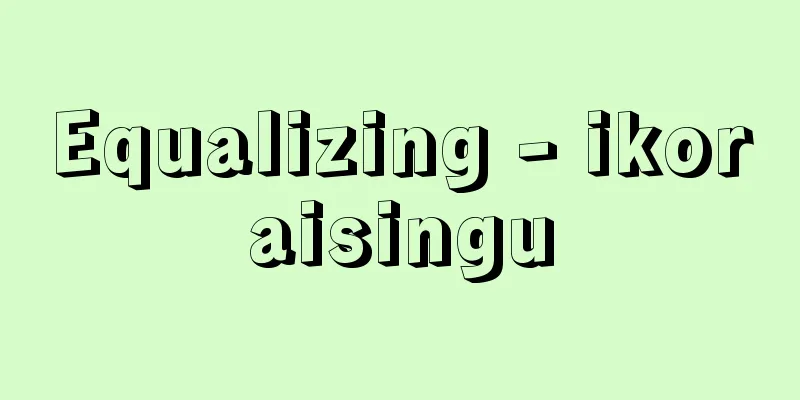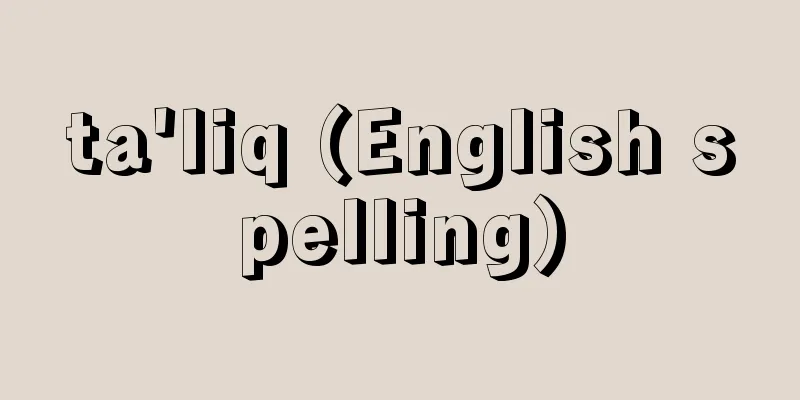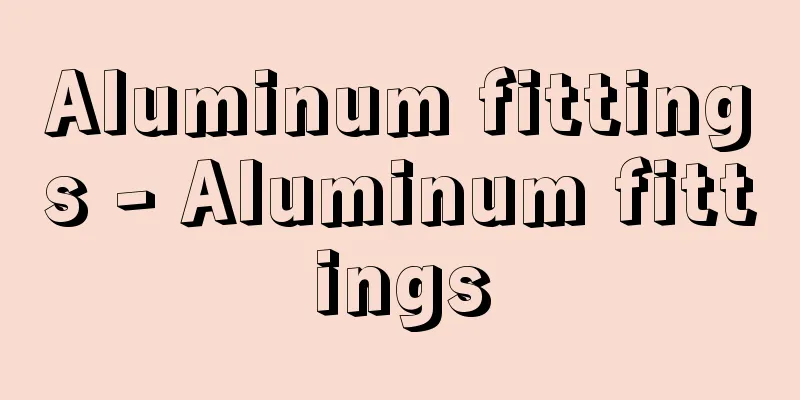Electric discharge

|
When a strong electric field is applied to an insulator, the material loses its insulating properties and an electric current flows. Discharges in gases are the most common, but discharges in vacuums, liquids, and solids are also problematic. The term vacuum discharge first came into use around the time of Plucker's discovery of cathode rays in 1857, but it was called a vacuum discharge because cathode rays are a phenomenon that occurs at low pressures where almost no light is emitted by the discharge. This was a discharge in a vacuum of about 1/10,000 to 1/1,000,000 atmospheres. After that, vacuum discharge was sometimes used to refer to discharges in air at pressures of less than 1 atmosphere, but in recent years it is not often used to refer to ordinary low-pressure discharges. In a discharge through an insulator, the conductors that supply electricity during the discharge are called electrodes, with the electrically positive electrode called the anode and the negative electrode called the cathode. During a discharge, electricity is carried by positively charged cations and negatively charged anions. Since electricity flows from the anode to the cathode, cations flow from the anode to the cathode, and anions flow from the cathode to the anode. Cations are atoms or molecules that have lost electrons, while anions are either electrons themselves or atoms or molecules with extra electrons attached, allowing electricity to flow through the insulator. [1] Discharge in a gas Conductors such as metals conduct electricity because they have a large number of electrons that can move freely, but gas has very few electrons that can move freely, so it usually conducts very little electricity. When a pair of electrodes is placed in a gas and a voltage is applied, at first, the few free electrons that exist in the gas due to cosmic rays and other factors flow. When the voltage is increased, the few electrons flowing are accelerated and collide with gas molecules, ionizing them. The new free electrons generated by the ionization of gas molecules are also accelerated, and further ionize other gas molecules. The generation of a large number of free electrons and positive ions in this way is called an electron avalanche. The positive ions generated by ionization also flow to the cathode, collide with the cathode and release new electrons. In this way, a large number of free electrons (negative ions) and positive ions are generated, and electricity flows. This state in which a large number of positive and negative ions exist is called plasma. Electrons accelerated by an electric field ionize gas molecules, dissociate gas molecules into atoms, and excite gas molecules and atoms to emit light. When gas molecules are excited, they emit a band spectrum, which is a molecular spectrum, and when atoms are excited, they emit a line spectrum, which is an atomic spectrum. A typical feature of a discharge is that light is emitted along the discharge path. [2] Discharge in solids and liquids Discharge in insulating solids and liquids corresponds to dielectric breakdown in the most ordinary sense. There are two possible mechanisms by which discharge occurs in solids: (1) When conductive electrons, which exist as impurities, flow through a solid, they ionize when they gain a certain amount of kinetic energy, causing an electron avalanche, and finally destroying the solid bonds. This is called true breakdown, and (2) Conduction electrons excite other bonded electrons into conductors, increasing electrical conductivity and causing thermal breakdown. The mechanism of dielectric breakdown in liquids is more complex and many aspects remain unknown, but as with discharge in gases, a mechanism involving ionization and the supply of electrons from the electrodes, and a mechanism in which ionization in bubbles leads to breakdown, are thought to be involved. A distinctive feature of solids and liquids is that the breakdown voltage is much higher than that of gases. In addition to the above, discharging can also refer to a charged body losing its charge in a broader sense. For example, when a current flows from electrode to electrode in a charged storage battery or capacitor, the storage battery or capacitor is said to be discharging. The same is true for batteries (primary batteries), where the process of current flowing from the positive electrode to the negative electrode is called discharging. [Tadatoshi Azuma] [Reference] | | |©Shogakukan "> Discharge in gas Source: Shogakukan Encyclopedia Nipponica About Encyclopedia Nipponica Information | Legend |
|
絶縁物に強い電場をかけると、その物質が絶縁性を失い、電流が流れる現象。気体中の放電がもっとも一般的であるが、真空中の放電、液体中の放電、固体中の放電なども問題となっている。なお、真空放電ということばが使われ始めたのは、1857年のプリュッカーの陰極線の発見のころであるが、陰極線は放電による発光がほとんど認められないような低圧力における現象なので、真空放電とよんだ。これは1万分の1気圧から100万分の1気圧くらいの真空度における放電であった。その後、広く1気圧以下に減圧した空気中の放電を真空放電とよぶことがあったが、最近では普通の低気圧放電には、あまり使われなくなっている。 絶縁物中の放電では放電中に電気を供給する導体を電極とよび、電気的に正(プラス)の電極を陽極といい、負(マイナス)の電極を陰極という。放電中では電気は正の電気をもった陽イオンと負の電気をもった陰イオンによって運ばれる。電気は陽極から陰極に向かって流れるから、陽イオンは陽極から陰極に向かって流れ、陰イオンは陰極から陽極に向かって流れる。陽イオンは電子を失った原子または分子、陰イオンは電子そのものか電子を余分に付着させた原子または分子であり、絶縁物中に電気が流れるようになる。 〔1〕気体中の放電 金属のような導体は、自由に動くことができる電子が多量にあるため電気を通すが、気体中には自由に動くことができる電子が非常に少なく、普通はほとんど電気を通さない。気体中に一対の電極を置き、電圧を加えていくと、初めは宇宙線などによって気体中にわずかに存在する自由な電子が流れる。電圧を高めると、わずかに流れている電子が加速され、気体分子に衝突して、気体分子を電離するようになる。気体分子の電離によって新しく生じた自由な電子もまた加速され、さらに他の気体分子を電離する。このようにして多量の自由な電子と陽イオンとが発生することを電子なだれが発生するという。また電離によって生じた陽イオンは陰極に流れていき、陰極に衝突して新しい電子を放出させる。このようにして多量の自由電子(陰イオン)と陽イオンとが発生し、電気を流すようになる。このように、陽イオンと陰イオンとが多量に存在する状態をプラズマという。電場によって加速された電子は、気体分子を電離するほか、気体分子を原子に解離したり、気体分子および原子を励起し発光させる。気体分子を励起した場合は、分子スペクトルである帯スペクトルを発光し、原子を励起した場合は、原子スペクトルである線スペクトルを発光する。一般に放電では放電路に沿って発光を生じることが特徴である。 〔2〕固体および液体中の放電 絶縁性の固体および液体中での放電は、もっとも普通の意味での絶縁破壊にあたる。固体中で放電がおこる機構としては、以下の二つが考えられている。(1)不純物として存在する伝導電子が固体中を流れるとき、一定値以上の運動エネルギーを得ると電離をおこし、電子なだれが発生し、ついには固体結合が破壊される。これを真性破壊という、(2)伝導電子が他の結合電子を伝導体に励起することにより電気伝導度が増して熱的に破壊する。液体中の絶縁破壊の機構はさらに複雑で不明な点が多いが、気体中の放電と同様に、電離と電極からの電子供給が行われる機構と、泡内の電離によって破壊に至る機構が考えられている。固体および液体の破壊電圧は、気体の場合よりも非常に高いことが特徴である。 なお以上のほか、広い意味では帯電体が電荷を失うことも放電という。たとえば充電された蓄電池やコンデンサーなどの電極から電極へと電流が流れているとき、蓄電池やコンデンサーは放電しているという。電池(一次電池)の場合も同様で、正極から負極へ電流が流れる過程を放電という。 [東 忠利] [参照項目] | | |©Shogakukan"> 気体中の放電 出典 小学館 日本大百科全書(ニッポニカ)日本大百科全書(ニッポニカ)について 情報 | 凡例 |
>>: Legal philosophy - Rechtsphilosophie; legal philosophy; jurisprudence
Recommend
Seppuku - Seppuku
A method of suicide by cutting one's stomach ...
Samurai's Commander - Jichugunyo
This is a court official book from the mid-Heian p...
Nakajima Sanpoemon
Kabuki actor. There are six generations. (1) The f...
Barred floor - Barred floor
It is also called ivory or eye carving. It is a ca...
Umematsuron - Baishouron
A history book from the Northern and Southern Cou...
Tawashi (brush) - Tawashi
A tool made by bundling straw or palm bristles tog...
Kypselos
Tyrant of Corinth (Corinthos) in ancient Greece (r...
Akasaka Marble
〘Noun〙 Marble produced at Mt. Kanebu in Ogaki City...
Neo-Confucianism
...In later times, in addition to these names, th...
Irrig Sweat - Irrig Sweat
The Turkic people ruled over northern and central...
Mr. and Mrs. Gilbreth
…His basic ideas were summarized in The Principle...
Kagosaka Pass - Kagosaka Pass
A pass on the border between Yamanakako Village, Y...
ataraxia
… “As long as we exist, death does not exist, and...
Adamski, G.
...The theory that flying saucers are alien space...
Pterodroma
…They have a thick, medium-sized body, long wings...









